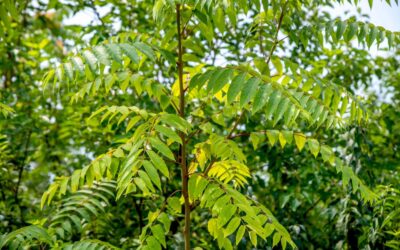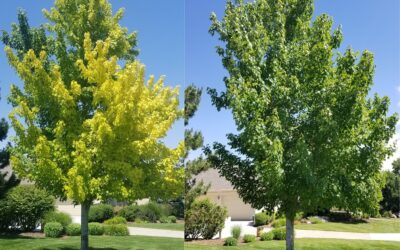Characteristics
The Austrian pine is a moderate- to fast-growing evergreen that can reach a height of 50-60 feet and spread up to 40 feet. Young trees have a pyramidal shape giving them a Christmas tree appearance, but as the tree grows its wide-spreading branches become more rounded. Austrian pines retain their lower branches as they mature resulting in a fairly low canopy. The deeply furrowed bark is dark brown to grey and picturesque, especially in winter.
Austrian pines have deep green needles 4-6 inches long that retain their color throughout the winter. They produce 2-4-inch conical cones that drop seeds every 2-5 years.
While not a significant source of lumber in the US, the moderately strong and straight-grained wood of Austrian pine is widely used as timber in general construction and paper manufacturing in the British Isles.
Its sap has been used in folk medicines in the Eastern Mediterranean and its sap is used as a sealant.
Hardiness
Austrian pines are very hardy trees. Some old European growths are as much as 500 years old. They do well in poor soils of most types, require only moderate water, good sunlight, and tolerate urban air and ground pollution well. They’re drought-tolerant but don’t like soggy soils. In urban settings, they can be expected to live for 80 years or longer.
Austrian pines have a strong central trunk that stands up well to high winds and snow loads. They’re hardy to -30°F and grow at altitudes up to 7,000 feet.
The Austrian Pine as a Landscape Tree
The low-maintenance Austrian pine is a dense, deep-green evergreen that works well as an accent, shade, or windbreak tree. Its high tolerance for poor soils and urban pollution make it a good choice for inner-city planting, even better than native ponderosa pines. Its drought tolerance makes it an excellent choice in xeriscaping applications.
Care should be taken in its placement since it’s a tall, wide-spreading tree at maturity.
According to the Colorado State Forest Service, pine wilt nematode has been documented in the area since 2008 and could impact growth and survival of non-native pines, including Austrian, in coming years. Consult with a professional arborist to discuss the best prevention and management practices.
Donovan Arborists offers planting, and trimming services for Austrian pines and other trees and shrubs as well as a complete landscape maintenance package for property in the Denver area.
We’re always happy to give free estimates to homeowners and property managers for any services they may need.



